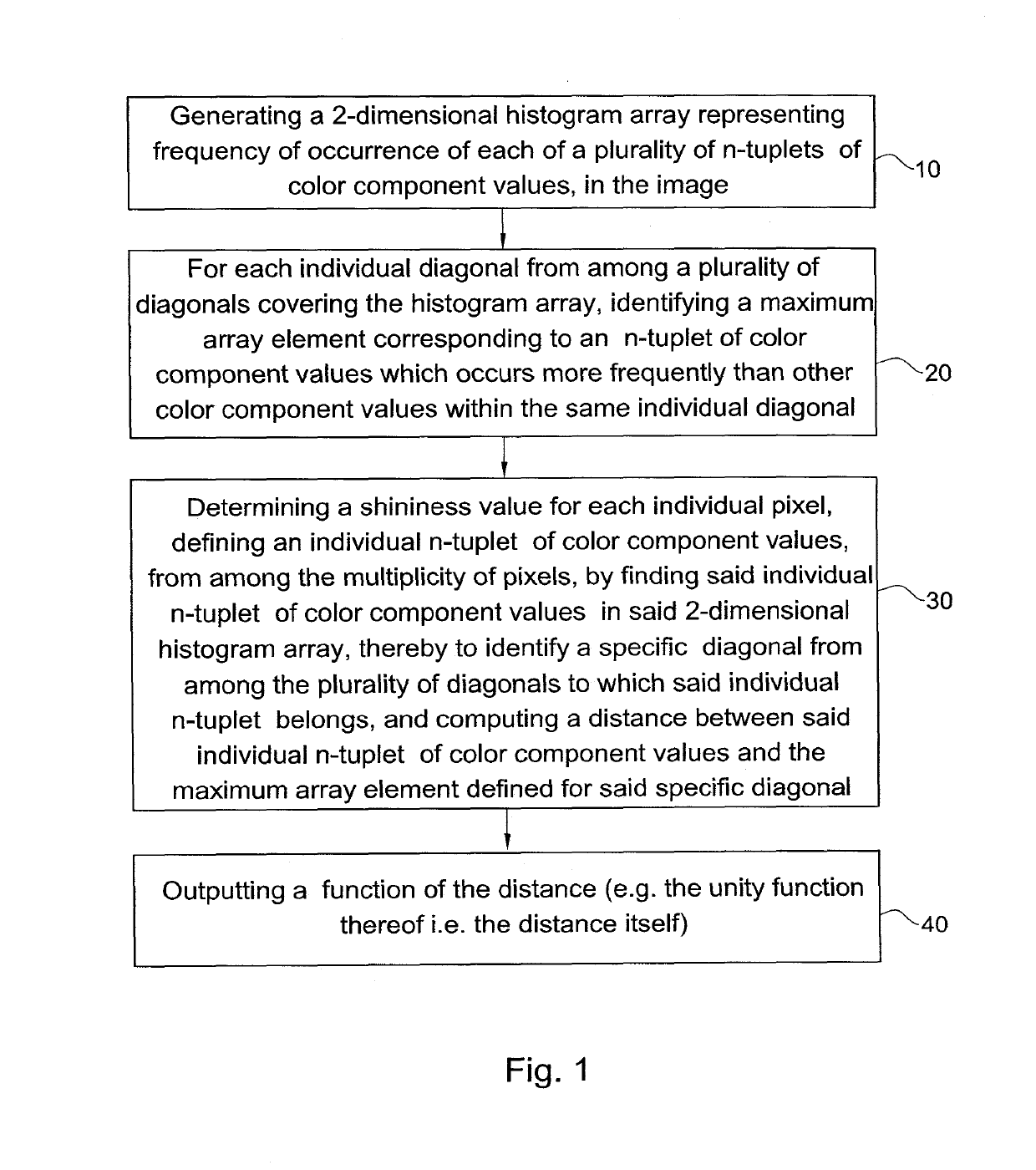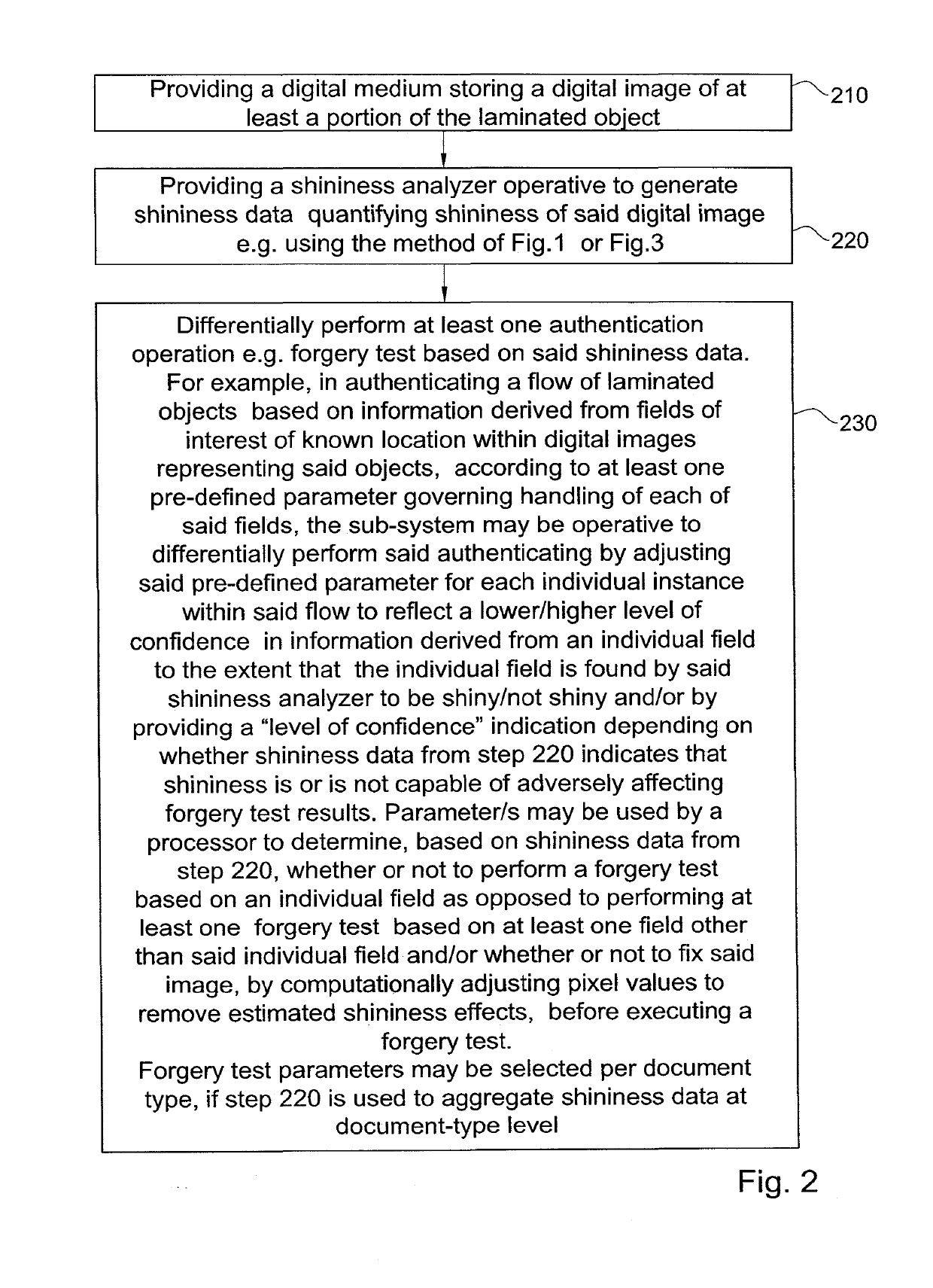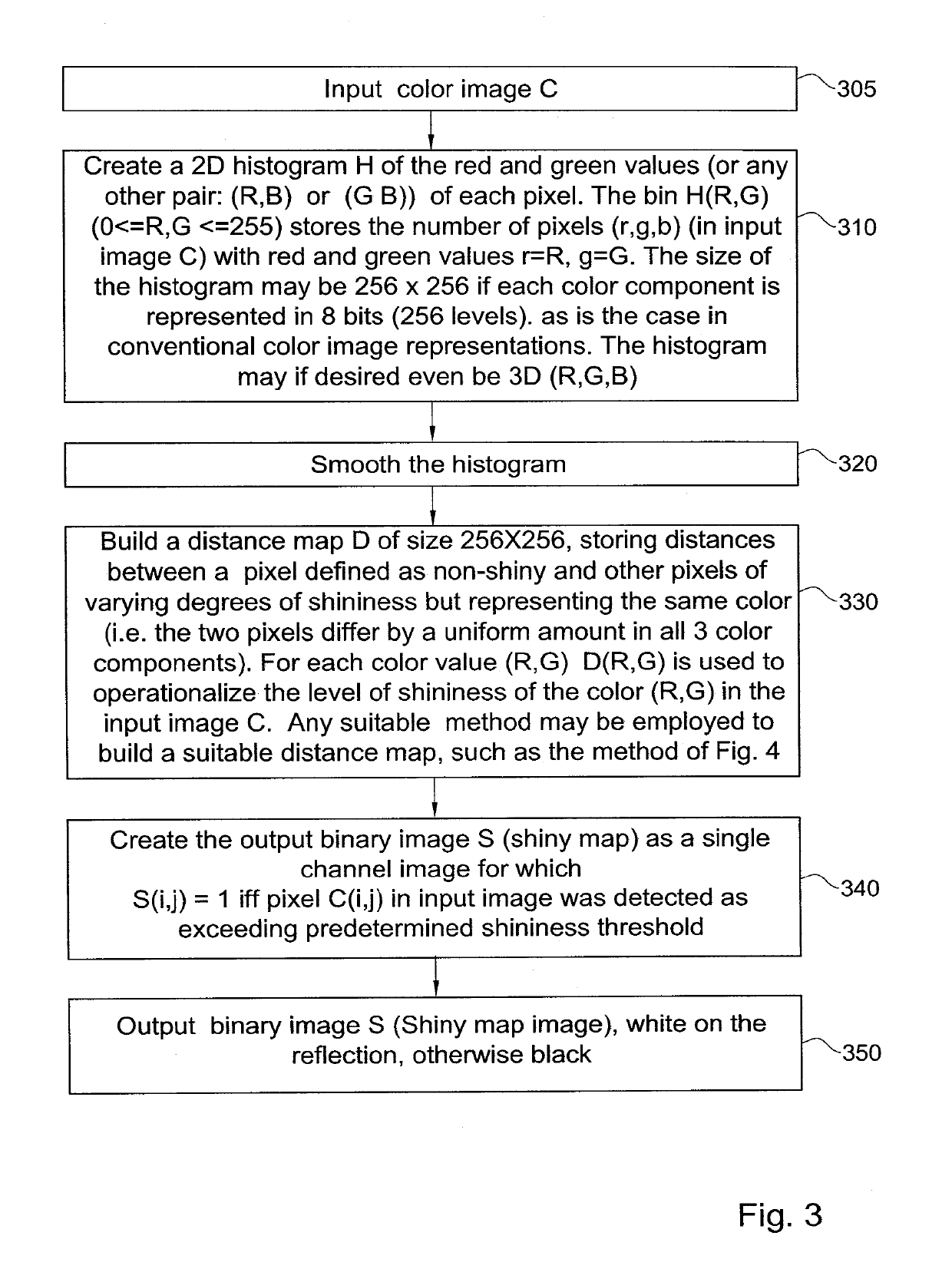System and method for quantifying reflection e.g. when analyzing laminated documents
a technology of reflection and analysis method, applied in the field of image processing, can solve the problem of not admitting the materiality of such publications and patent documents to patentability, and achieve the effect of low error ra
- Summary
- Abstract
- Description
- Claims
- Application Information
AI Technical Summary
Benefits of technology
Problems solved by technology
Method used
Image
Examples
embodiment 1
[0025]A system for computerized authentication of a laminated object, the system comprising:
[0026]a digital medium storing a digital image of at least a portion of the laminated object in a computer-implemented memory;
[0027]a shininess analyzer operative, using a processor, to generate shininess data quantifying shininess of the digital image; and
[0028]a parameterized computerized authentication sub-system operative to differentially perform at least one laminated object authentication operation based on the shininess data.
embodiment 2
[0029]A system according to embodiment 1 wherein the image is represented by a multiplicity of pixels and the shininess analyzer is operative for quantifying shininess of the image by:
[0030]generating a 2-dimensional histogram array representing frequency of occurrence of each of a plurality of n-tuplets of color component values, in the image.
embodiment 3
[0031]A system according to any of the preceding embodiments wherein the laminated object comprises a physical document.
PUM
 Login to View More
Login to View More Abstract
Description
Claims
Application Information
 Login to View More
Login to View More - R&D
- Intellectual Property
- Life Sciences
- Materials
- Tech Scout
- Unparalleled Data Quality
- Higher Quality Content
- 60% Fewer Hallucinations
Browse by: Latest US Patents, China's latest patents, Technical Efficacy Thesaurus, Application Domain, Technology Topic, Popular Technical Reports.
© 2025 PatSnap. All rights reserved.Legal|Privacy policy|Modern Slavery Act Transparency Statement|Sitemap|About US| Contact US: help@patsnap.com



